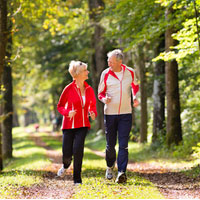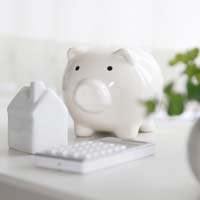
Pilates for over 50s
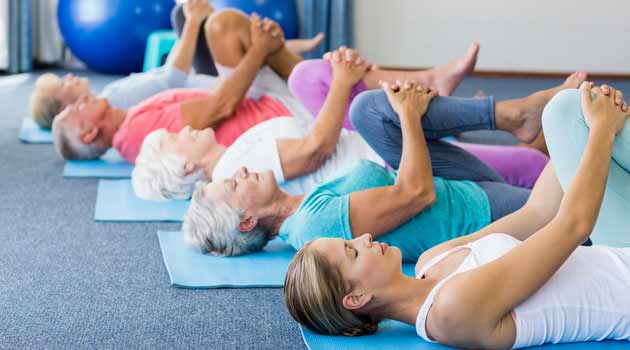
Pilates is one of the best ways for over 50s to get fit; it offers numerous mental and physical health benefits without being too taxing on the body, and is loads of fun too, according to the Gransnet users who’ve tried it. So, if you’re tempted to give it a go, here’s what you need to know, plus some tips on how to find a class near you.
What is Pilates? | Why it's great for over 50s | Different types | Health Benefits
Difference between yoga and Pilates | What to wear | Pilates at home
Pilates classes for beginners | How to find a Pilates class near me
Get our daily newsletter delivered straight to your inbox...
What is Pilates?
"I go to classes and love it. Our teacher is very well qualified and alters the exercises to suit us. We are encouraged to do what we are able to do, so it's a good workout."
The muscle-building exercises were developed by Joseph Pilates in the 1920s as a means of rehabilitating injured soldiers who had returned from the First World War. Since then, the techniques have been repurposed into a popular core-strengthening workout, which has become a favourite among the over 50s.
Pilates for over 50s
"The beauty of Pilates is that anyone can do it. A good teacher will learn about your body and help you to work at the level that's right for you."
Staying fit and healthy is extremely important, especially in later life, and Pilates is a great way for older adults to build and maintain their strength as it improves posture, balance, stability and flexibility, all without being too taxing on the joints or muscles.
The exercises can also reduce the symptoms of later-in-life ailments, such as arthritis and osteoporosis, and can even relieve back pain too. And, as with any form of exercise, it can do wonders for your mental wellbeing.
Some classes use equipment which can be used as support or resistance depending on whether you need extra help due to a medical condition or disability, or whether you want to challenge your body. However, some classes only use mats, so it's worth looking at the different types available to see what will suit you best.
If you have any health conditions, please contact your GP before trying Pilates.
Different types of Pilates
"I've been going to classes for years. There are different types so do take up the offer of taster lessons. Some are more active and introduce some cardio work while others favour slower movements, but nonetheless work the parts that you never knew you had."
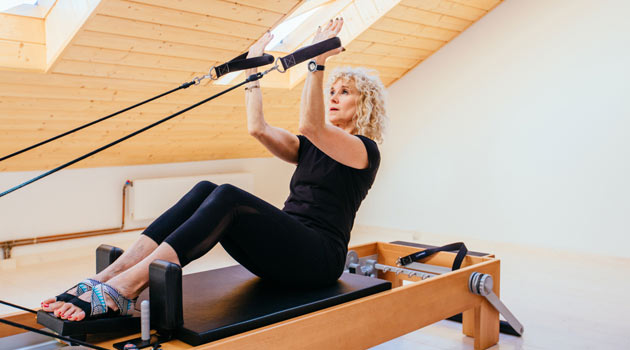
So, you're thinking about giving it a go, but which class is right for you? Here are the five main types and what's involved in each.
1. Mat Pilates
Mat classes are performed on a mat and focus solely on building core strength through controlled breathing and challenging your muscles in a number of ways. The benefit of this type is that it can be done anywhere, but some find it harder than classes that use equipment.
2. Classical Pilates
Closest to the style envisioned by Joseph Pilates, it features the original series of movements performed in the correct order. While there are no variations in this form, some teachers might add advanced exercises to the class programme.
3. Contemporary Studio Pilates
The contemporary form is based around the work of Joseph Pilates, but includes variations that allow for creativity or injury rehabilitation. Taught in equipped studios, this type caters to a variety of needs, whether it's general fitness, rehab or sports training, and is usually performed in very small groups.
4. Reformer Pilates
Typically a full body workout, this class uses only one piece of equipment, the Reformer. This is a frame with a flat platform that rolls back and forth and is attached to the frame with springs. These springs provide different levels of resistance. Exercises can be done in a variety of ways, which makes this piece of equipment extremely versatile to use.
5. Clinical Pilates
This is used by physiotherapists to treat specific injuries, including chronic fatigue syndrome and lower back pain. As such, it doesn't always follow regular Pilates exercises, but is adapted to meet the needs of the individual.
Sign up to our newsletter for more health and fitness tips
5 health benefits of Pilates
"You have to do it regularly, but you will really notice the difference. I could never do the plank or press-ups, but I can do both now - and I am in my 60s! I would never have believed I'd be able to do any of this."
One of the main reasons why it is so popular among those over the age of 50 is because of its associated health benefits, which definitely aren't in short supply. Here are some of the ways that it makes you healthier according to practitioners.
1. Can help reduce back pain, arthritis and osteoporosis
"I have had no back problems since doing Pilates."
According to the NHS, this form of exercise could reduce lower back pain, particularly with the use of equipment, but to do this the exercises must be tailored specifically to you and what you can manage.
It can also help arthritis as the exercises gently stretch out your joints, lengthen your body and improve your posture and circulation, which can reduce pain associated with the condition.
Done properly, the exercises can reduce the chances of a bone fracture or breakage in those with osteoporosis as it can: increase bone density; increase muscle mass, which helps support the bones; improve balance, which lowers the chance of a fall; improve range of motion and posture, which can help keep the bones aligned.
However, Pilates is not suitable for everyone with osteoporosis so it is very important to consult your GP first.
2. Strengthens your body
"I generally feel much stronger and more supple."
One of the core components of Pilates is strength development, which will increase muscle mass and decrease general fatigue. As we age, we increasingly lose muscle, so this is a great way to build up and maintain it.
3. Stimulates the brain
"Carrying out Pilates moves requires concentration and coordination and I find that I can forget my problems during the class."
Learning a new skill is hugely beneficial as we get older because it exercises the brain, and Pilates is particularly helpful as it promotes focus, mindfulness and cognitive flexibility.
4. Helps you to lose weight
"I've found abs I didn't know I had, my thighs no longer rub together and I've begun to do some cardio, which I love."
It can be a solid calorie-burning workout, depending on intensity, so when paired with a healthy diet and other forms of exercise, such as walking, swimming or running, it could help promote weight loss.
5. It gives you a new lease of life
"I dread to think what I'd be like without Pilates; when I come home from my class I feel completely energised!"
Exercise of any form releases endorphins, which trigger positive feelings and better mental wellbeing. As such, Pilates can help to reduce anxiety or stress and make you feel happier in both body and mind.
You will also have the opportunity to meet a new group of people who, you never know, could become long-term friends.
What is the difference between yoga and Pilates?
"I go to Pilates and yoga and love both, but I find the former more effective than yoga in building core strength, stability and flexibility."
Often, there is some confusion between Pilates and yoga as both focus on strength and flexibility, balance, posture and breathing, but the two are, in fact, quite different.
Pilates features exercises that are performed in a flow of movement as opposed to the static poses you see in yoga. It's less about relaxation and meditation (fundamental aspects of yoga) and more about the connection between mental health and physical health. Both exercises also use different types of equipment.
There is, however, another form of exercise called Yogalates, which supposedly harnesses the benefits of both by combining the movements of Pilates with the mindful-breathing techniques associated with Yoga.
Pilates at home
“A friend and I meet weekly to follow a DVD that the teacher made for us to practise at home.”
We recommend that you attend a few classes first to gauge what type of Pilates is best for you, but once you’ve got the hang of the movements you can then start to practise at home.
You can do this either by memory of what your teacher has taught you or by using instructional videos which you can find online or on DVD.
This means that if you have time constraints, i.e. if you work full-time or regularly look after your grandchildren, or if you are looking to save money in retirement, you can still practise Pilates. You can also buy basic equipment to use at home, such as a foam roller which is easy to use.
Here are some examples of videos you can try at home:
What to wear
"I have clothes just for Pilates and the gym."
As you will be moving around a lot, it is suggested that you wear comfortable clothes or active wear to aid easy movement, such as a vest or t-shirt paired with leggings or joggers.
However, make sure that your clothes aren’t too loose as you and your teacher will not be able to see if you are doing the exercises correctly. Also, if you are using equipment, such as a Reformer, loose clothing could get caught.
If you are using a Pilates mat, opt for flat clothing as beads or knots could dig into you. Some people don’t mind this, but bras often have a metal clasp which can be uncomfortable when lying down, in which case you can try a sports top or fitted sports bra.
You don’t need a particular type of shoe as Pilates can be done barefoot or in socks, but most studios have their own suggested protocol which you can find out about before you attend a class.
Pilates classes for beginners
If you're apprehensive about giving it a go, try a taster session first or find a class specifically for over 50s. Don't worry about feeling like a novice - you need next to no knowledge of the exercises to give a beginner's class a go. Just keep in mind that they're either taught as a group or one-to-one, so it's up to you to figure out what works best for you.
Pilates classes near me
"I'm a real convert to this form of exercise and can't recommend it enough."
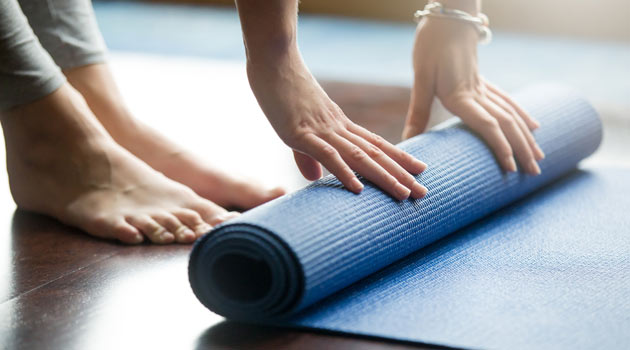
Whether it's through Age UK, U3A, local community centres, local councils, your local gym or even an independent instructor, there are a number of options when it comes to finding a Pilates class in your local area. Here are just a few spots around the UK to give you a head start.
Please note - some of the classes listed below may not be running yet due to coronavirus.
South East
Brighton and Hove l Bracknell Forest l Slough l New Forest l Portsmouth l Kent l Seaford
London
Barnet l Haringey l Islington l Hammersmith and Fulham l Camden l Richmond l Harrow l Crystal Palace l Brixton l Wandsworth l Balham l West Norwood and Dulwich l Streatham
North West
Blackburn l Manchester l Bury l Liverpool l Cumbria
East of England
Norwich l Cambridgeshire l Essex
West Midlands
Herefordshire (Bodenham) l Warwickshire (Nuneaton) l West Bromwich l Birmingham l Redditch l Dudley
South West
Somerset l North Somerset (Weston-super-Mare) l Bristol l Plymouth l Reading
Yorkshire and the Humber
York l Sheffield l Leeds l Hull
East Midlands
Nottinghamshire l Nottingham l Lincolnshire l Derby l Leicestershire
North East
Newcastle l Sunderland l Darlington l Gateshead l Durham l Middlesbrough
Northern Ireland
Scotland
Midlothian l Dundee l North Ayrshire l South Ayrshire l Edinburgh l Glasgow l Aberdeen
Wales
Penarth l Pembrokeshire l Swansea l Conwy l Wrexham
Disclaimer: The information on our diet and fitness pages is only intended as an informal guide and should not be treated as a substitute for medical advice. Gransnet would urge you to consult your GP before you begin any diet if you're concerned about your weight, have existing health conditions and/or are taking medication.

